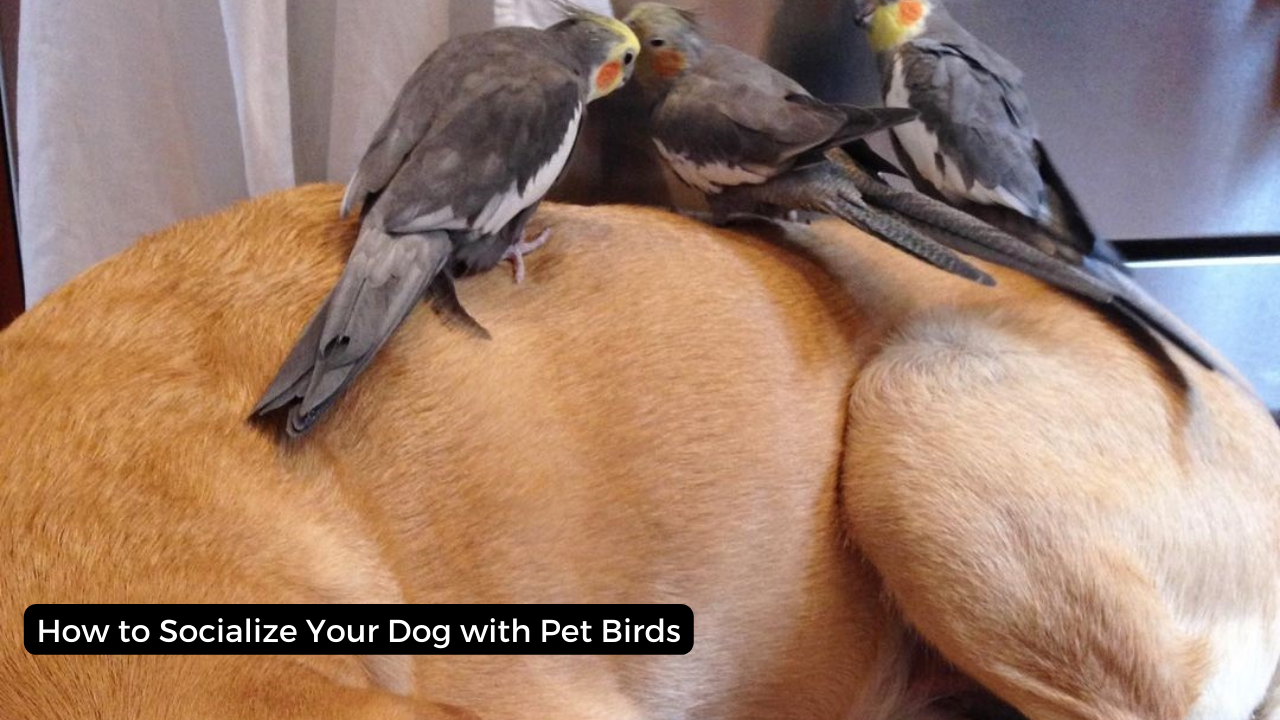Introducing two distinct species, like dogs and pet birds, can seem like a challenging task. However, with the right approach, patience, and guidance, your dog can learn to coexist peacefully and even befriend your feathered companions. Socializing your dog with pet birds requires a delicate balance of training, supervision, and understanding. In this guide, we’ll delve into the art of fostering a harmonious relationship between your canine friend and your avian companions.
Understanding the Dynamics: Dogs and Birds
Before diving into the socialization process, it’s crucial to understand the inherent instincts and behaviors of both dogs and birds. Dogs are descendants of wolves, pack animals with a predatory history. Birds, on the other hand, are often prey animals with a keen sense of flight and a cautious nature. Recognizing these natural instincts helps you approach the socialization process with empathy and foresight.
Early Exposure and Positive Associations
Like any successful venture, socializing dogs and pet birds starts with a strong foundation. If you have a young dog, expose them to the presence of birds early on. Associate positive experiences, such as treats or playtime, with the presence of birds. Gradually increase exposure time as your dog becomes more comfortable.
Obedience Training is Key
Solid obedience training is the cornerstone of any successful interaction. Commands like “sit,” “stay,” and “leave it” provide the structure and control needed during dog-bird interactions. When your dog responds promptly to commands, you can redirect their attention away from the birds, ensuring a safe and controlled environment.
Leashed Introductions
When you’re ready for direct introductions, always keep your dog on a leash. This provides you with the ability to control your dog’s movements and reactions. Allow your dog to observe the birds from a distance and reward calm behavior with treats and praise. Over time, gradually decrease the distance between your dog and the birds.
Supervised Interactions
Supervision is essential during initial interactions. Birds can be easily startled, and your dog’s playful nature might inadvertently cause stress. Keep interactions short and positive. Observe body language closely; if your dog displays signs of aggression or intense excitement, it’s time to intervene and redirect their attention.
The Power of Desensitization
Desensitization involves gradually exposing your dog to the sights and sounds of birds. This process helps your dog become accustomed to the presence of birds, reducing the likelihood of overexcitement. For instance, play recordings of bird sounds at a low volume and reward your dog for remaining calm.
Positive Reinforcement and Patience
Consistency and patience are your greatest allies in this journey. Reward your dog generously for calm behavior around the birds. Celebrate every small victory, whether it’s a moment of stillness or a controlled approach. Understand that progress takes time; there might be setbacks, but persistence pays off.
Conclusion
In the world of pet companionship, the harmonious coexistence between dogs and pet birds might seem like a unique challenge. However, with proper socialization techniques and a commitment to understanding both species, a peaceful bond can indeed be forged. By fostering a safe and controlled environment, utilizing obedience training, and celebrating each step forward, you’re not only enriching your pets’ lives but also nurturing a unique and heartwarming relationship.
